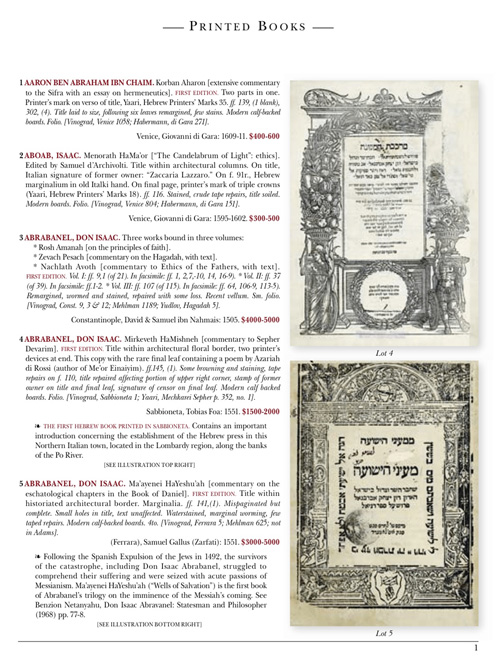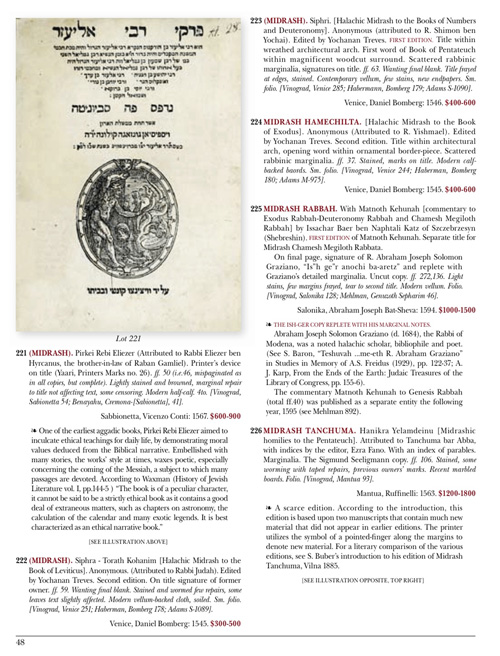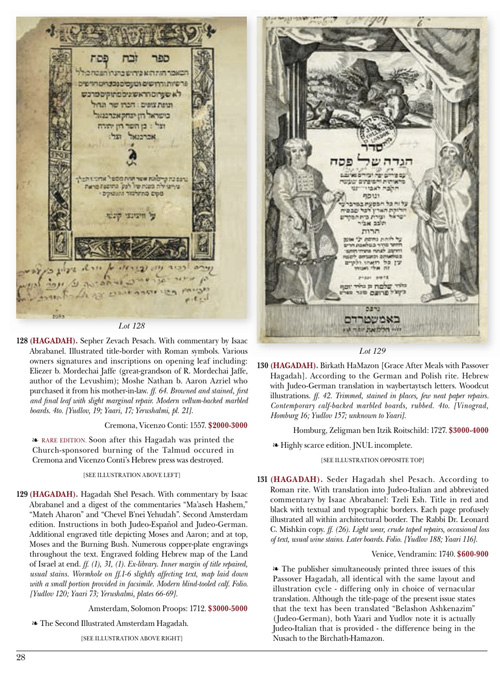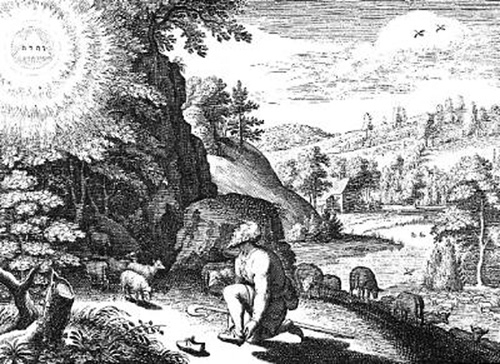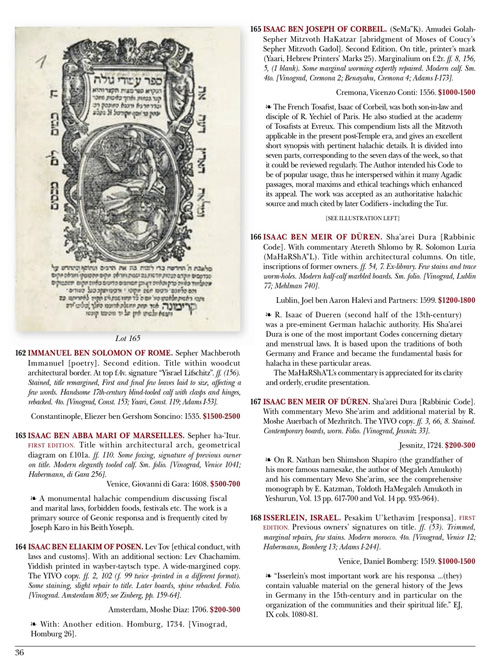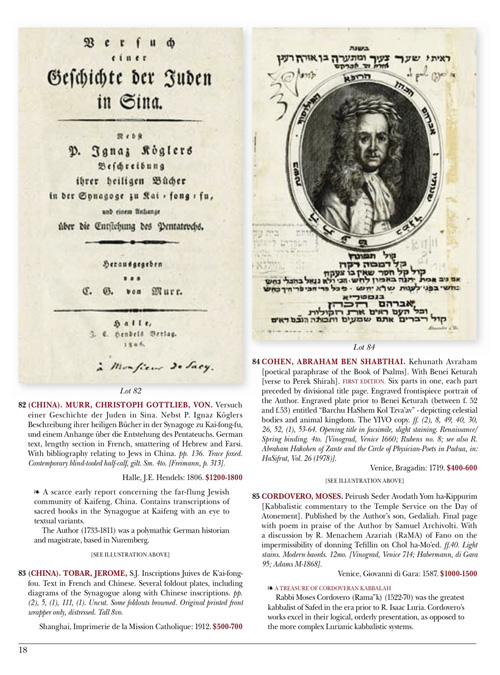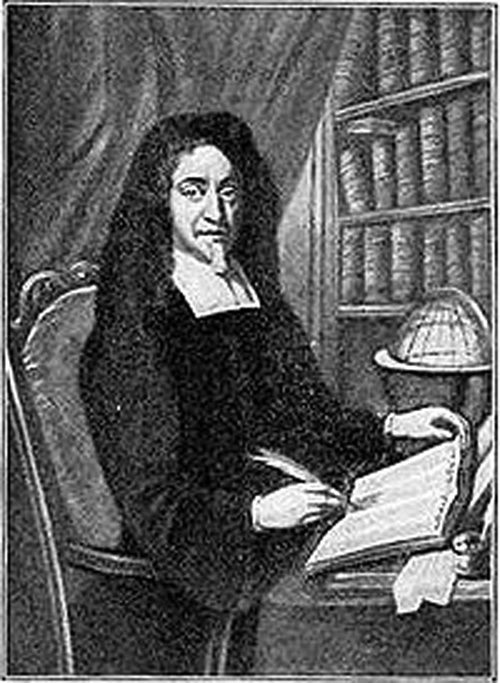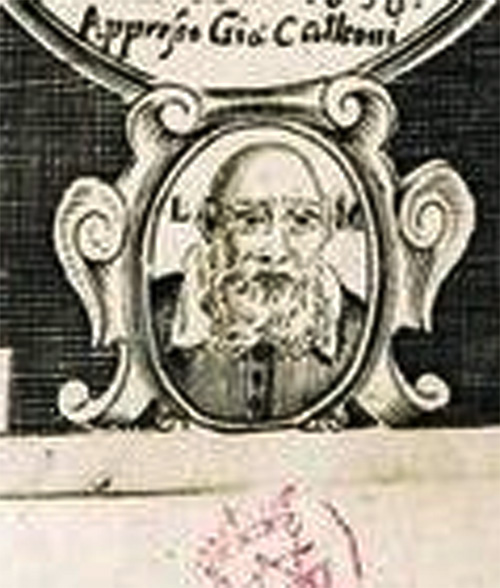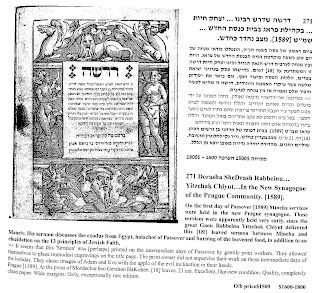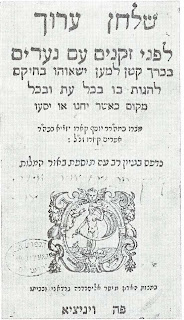Book Review: The Schechter Haggadah: Art, History, and Commentary
by Elli Fischer
Given the thousands of
haggadot that have been published over the years, and the dozens of new ones published each year, it is not easy for any single
haggadah to separate itself from the others on the market. As a result, some new
haggadot provide unique commentary, others contain innovative liturgy and practice, and still others resorts to gimmickry and humor to win adherents. Only rarely does a
haggadah appear that is truly remarkable.
The Schechter Haggadah: Art, History, and Commentary, by Dr, Joshua Kulp and Rabbi David Golinkin, is indeed a remarkable
haggadah.
In truth, the title of this haggadah is a bit misleading, since the “history” is part of the “art” and the “commentary”, and not an independent section. The text is divided into three sections: the first contains the traditional Ashkenazic haggadah text, adorned with artwork from early, mostly manuscript, haggadot. The second section, authored by Rabbi Golinkin, is an expanded section on the artwork of the haggadah, containing 115 annotated illustrations (according to the authors; though I did not count, I did notice that there were a whole lot of pictures). The comments include basic metadata such as time and place of appearance and where the original illustration can now be found, as well as other historical curiosities pertaining to the particular illustration, the haggadah in which it appears, or artistic themes in the illustration of haggadot in general. The third section of this haggadah is Dr. Kulp’s commentary, in excess of 100 pages, which deconstructs the text of the haggadah and the seder practices, locating their original meanings in the earliest Jewish texts and tracing their development through Jewish history. The latter two sections are referenced by unobtrusive notes in the main text.
The first section is beautifully laid out and has good proportion. Since the commentary does not appear alongside the text, one is not distracted by it during the course of the seder. The artwork that appears in the first section contributes to the aesthetic experience without crowding out the main event. Dr. Kulp’s translation is very straightforward and readable.
The illustrations are beautiful and fascinating, and the commentary informative. It features thirty-seven different depictions of the “four sons”, demonstrating how they were perceived by different artists over close to a millennium of Jewish history. Other artistic elements contain a touch of humor, even if the contemporary reader does not share the same sense of humor. For example, in two portraits from 14th and 15th Century haggadot, a husband points at his wife during the recitation of “maror zeh” (“This bitter herb”). Unfortunately, Rabbi Golinkin fails to note the Biblical origin of this particular misogyny: Kohelet 7:26 (“and I find more bitter [mar] than death the woman”).
Dr. Kulp’s commentary is at its best when engaging in source criticism of the haggadah and its antecedents. In some cases (“the four sons”, “go and learn”) he juxtaposes several variations of the same element, taken from early rabbinic works such as the Sifri, the Talmud Yerushalmi, and early haggadot, demonstrates their significant differences, surveys scholarly work on the relationships between the texts, and offers his own summaries and conclusions regarding the evolution of that element of the haggadah. This type of study, which typifies academic Talmudic scholarship, does not generally appear in popular works. To his credit, Dr. Kulp does an admirable job explaining the process and conclusions of his analysis for the educated layman, though his writing style is occasionally awkward (e.g. “read for someone the Hallel” instead of “read the Hallel for someone”), and I noted a number of grammatical errors (especially a lack of commas) and typos (e.g. “Hillel” instead of “R. Yohanan” on p. 258).
In general, the commentary section is structured as a series of sections, varying in size, that trace the origins of the seder and the haggadah. Virtually every standard practice and text is addressed, some more thoroughly and convincingly than others. The primary sources that Dr. Kulp uses are the Talmudim, Mishna, Tosefta, Tannaitic Midrashim, and haggadot from the Geonic era, from both Babylonia and Eretz Yisrael. However, he occasionally refers to other early sources such as apocryphal works, Greco-Roman writings, early Christian writings, Josephus, and Philo; haggadot from the times of the Rishonim and early Acharonim; and standard halakhic codes.
These sections, for the reader and teacher, constitute the best of what this haggadah offers. Each is akin to an individual lesson on a particular aspect of the haggadah or seder, tracing it from its origins to standard practice. For example, with regard to the four cups of wine, he begins with the Tosefta (Pesachim 10:1) instructing charity bursars to provide poor people with four cups of wine for Pesach night. Working of Professor Shamma Friedman’s theory that the Tosefta predates the Mishna, at least in part, he discerns that the number four was originally a somewhat arbitrary number that was deemed appropriate for the Pesach-night symposium. Later, in the Mishna, the four cups were formally arranged as the framework for the seder meal. Finally, midrashim sprang up to account for the significance of the number four on the night of Pesach. This evolutionary process sees the wine transformed from a vehicle of celebration into a ritual and symbolic act, a process that Dr. Kulp notes over and over again as practices that originated in a Greco-Roman context (dipping, reclining, etc.) are transferred into new cultural settings.
Nevertheless, Dr. Kulp’s explanations for the various texts and performances are not always convincing. For example, he does not really offer an explanation for the composition of the “
Ha Lachma Anya” paragraph or for the introduction of the Mishna about Rabbi Elazar ben Azarya (though in both cases he argues against reading them as anti-Christian polemics). With regard to Rabbi Yehuda’s mnemonic, he demonstrates that it is an early source, but does not address why such a mnemonic would need to be developed in the first place (indeed, the Gaon of Vilna [
Likkutim at the end of
Seder Zeraim] argues that the original context of the mnemonic is as an inscription on Moshe’s staff, and was only imported into the
hagaddah at a later date; see also p. 24 of R. Hayim Hischenson’s
Motza’ei Mayim,
here).
His reading of the midrashim contained within the “go and learn” often miss obvious textual points. For example, he asks, “why is cattle-plague singled out as the plague through which God took the Israelites out of Egypt?” He fails to note that the midrash in question intertextually links the “strong hand” of Deuteronomy 26:8 with the “hand of the Lord” of Exodus 9:3. The same can be said of the “portents” of Joel 3:3 and the same verse in Deuteronomy, about which he asks a similar question. He interprets the midrash on “u-vemorah gadol” as being based on a tradition that “morah” means “vision” and not “terribleness”. If that would be the case, however, then the prooftext cited (Deut. 4:34) is superfluous, as the “revelation of the Divine Presence” can be adduced without the prooftext. Rather, the exegetical nub seems to derive from the final phrase of the prooftext: “just as you saw the Lord your God do for you in Egypt, before your eyes”. As a rule, he does not discuss these midrashim as exegesis and tends to neglect the intertextual elements of these midrashim. While not a fatal flaw, an opportunity to more fully explore the nature of rabbinic exegesis is missed.
Another example of where Dr. Kulp misses a fairly straightforward explanation for the flow of the haggadah pertains to the division of Hallel. He writes: “It seems to me that dividing the Hallel into two portions was meant to highlight the centrality of the pesah sacrifice, perhaps in a similar way that reciting a blessing before and after food sanctifies the food”. Later in the same section, when discussing differing practices regarding the recitation of a bracha before Hallel, he writes that “we recite the Hallel at seder [sic] because the Exodus was miraculous… In contrast, in Babylonia they thought that the Hallel was recited in connection with the pesah sacrifice and hence they considered its significance to be diminished when the sacrifice could not be offered.” While it is hard to deny the difference between Eretz Yisraeli and Babylonian customs surrounding the recitation of Hallel, Dr. Kulp misses the main transitional link that mandates the recitation of Hallel, or at least part of it, at the end of the recounting of the Exodus. The transitional paragraph (imported into the haggadah from the Mishnah) states: “Therefore it is our duty of thank, praise (le-hallel), laud, glorify…the One who made all these miracles for us…Let us say before Him, ‘Hallelujah!'”. In other words, the recounting generates the duty to give praise, and it would be inappropriate to conclude the retelling without some words of praise. This approach is borne out by linking the latter part of Mishna Pesachim 10:5 with 10:6.
These examples all seem to flow from a single, overarching issue. Dr. Kulp tends to atomize the different parts of the haggadah rather than viewing them as part of a single structure or relating to a single theme. He states as much explicitly (p. 230): “we should be extra cautious of detecting editorial intention in the sum of the Haggadah’s texts. In my opinion it is extraordinarily difficult to speak of the ‘intention of the Haggadah.'” While I understand his caution, and agree that it is impossible to speak of a single editorial intention, there is no doubt that at each stage, with the inclusion or alteration of each new text, someone, somewhere, felt that a particular text fit with the overall theme or structure of the haggadah; the chaos is more controlled than Dr. Kulp would have us believe.
I hope that these last few paragraphs to not convey the wrong message; the Schechter Haggadah is a beautiful as well as excellent work of scholarship. Had I included every one of my criticisms, kal va-chomer everything that I liked, this review would have been far longer than it already is. In particular, the commentary has deepened my understanding of the evolution of the haggadah, and for one who is not familiar with source critical methodology, this haggadah can be transformative. My recommendation for readers of this haggadah would be to go through it before the seder: there is simply too much to digest, and the issues are often simply too technical, to be appropriate fare for the seder itself. Additionally, this haggadah is a fantastic resource for educators to teach the haggadah. Dr. Kulp’s commentary evolved from a series of classes that he gave, and it consequently is structured in a manner that is easily adaptable to a classroom setting (as my wife can readily attest).
Chag Kasher ve-Sameach!
